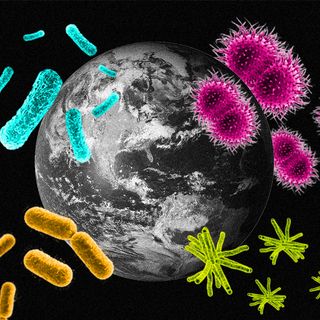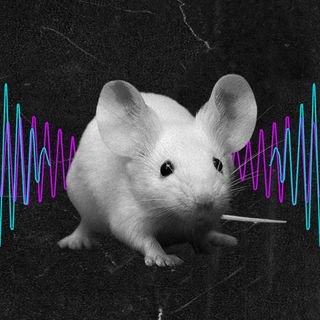
Madras HC Grants Nature ‘Living Being’ Status, Noting Its Legal Rights
The fundamental rights are necessary “for its survival, safety, sustenance, and resurgence in order to… promote its health and well-being.”

Nature stands front and center in a strengthening legal movement today. Do lands, rivers, forests, wildlife have legal rights in the court of law? A judgment by the Madras High Court added to this discourse recently; the court declared nature as a “living being” with legal rights and duties.
In effect, this means nature should no longer be looked at like the property of humans; instead, natural ecosystems are akin to a “living being,” and thus are entitled to all legal rights and even liabilities.
“Mother Nature is accorded the rights akin to fundamental rights, legal rights, constitutional rights for its survival, safety, sustenance, and resurgence in order to maintain its status and also to promote its health and well-being,” the Madurai Bench of Madras High Court said. “The State and Central governments are directed to protect ‘Mother Nature’ and take appropriate steps in this regard in all possible ways.”
This was in response to a petition from a former Tahsildar-level official; the petitioner objected to the disciplinary proceedings against him for giving land deed (patta) for giving away a land classified as “Forest Poramboke Land.” The court noted that misuse of forest lands posed a threat on a macro scale. Nature, in this case, included water bodies, flora and fauna, forests, mountains, glaciers, and air.
The court invoked the “parens patriae jurisdiction,” Latin for the parent of the nation jurisdiction. Doing so affords nature the rights, duties, and liabilities of a living person — in order to preserve and conserve them.
What does this mean? It may help to look at what such a claim to personhood looks like in reality, In 2017, the Uttarakhand High Court granted legal rights to the heavily-polluted Yamuna and Ganges rivers. The tenets of the argument were similar; the courts legally considered rivers as minors and the state governments as their appointed guardians.
The court then went on to declare all the glaciers, including Gangotri and Yamunotri, rivers, streams, rivulets, lakes, air, meadows, dales, jungles, forests wetlands, grasslands, springs, and waterfalls as living entities. These ecosystems were “juristic (non-living) person,” and the court reiterated its previous order on shutting down industries, hotels, and ashrams discharging sewage into the Ganges.
Related on The Swaddle:
Ecuador Becomes the First Country In the World to Give Legal Rights to Animals
The personhood of natural ecosystems was once a fringe concept. It is now slowly being absorbed into the mainstream as countries globally move to offer legal protection to nature in some shape or form. In October 2021, an indigenous tribe filed the first “rights of nature” case in the U.S., demanding wild rice be given legal rights. Ecuador went on to give legal rights to animals — the first country in the world to do so. In 2021, a U.S. court also ruled that Pablo Escobar’s “cocaine hippos” — descendants of animals that Escobar illegally imported to his Colombian ranch in the 1980s — can be legally recognized as people.
“It is totally possible to extend legal rights to non-humans, including wildlife,” said Karen Bradshaw, a professor of law at Arizona State University’s Sandra Day O’Connor College of Law. “People are desperate to radically reimagine the human relationship with nature; we can use new tools to achieve that goal within the next few decades.”
This teases out a more complex question: what do judgments like these mean for conservation? The Madras High Court in the present case pointed out the hypocrisy of using words like “sustainable development,” as it allows companies to still hurt the environment in the name of goodwill. India also has the “Polluter Pays” principle, which refers to “the absolute liability for harm to the environment extends not only to compensate the victims of pollution but also to the cost of restoring the environmental degradation.” Such legislations do little to actually discourage industrialists and governments alike to undertake massive environmentally deleterious projects. The legal right to nature would mean “the phrases like ‘sustainable development,’ ‘the polluter pays,’ ‘the precautionary principle’ shall not be allowed anymore,” the court observed.
Arguably, governments and leaders bandy the term “Mother Nature” in a hapless way. It also indubitably does a disservice to women, by inherently linking their shared subjugation. Otherwise meaningful terms “have been co-opted by an ideology that actually values neither women nor nature,” as Quartz noted. In some ways, the current judgment harps on the same ideology. Nevertheless, the question of granting personhood to rivers, land, and every facet of the environment still carries significant merit.
There are still tangible questions that restrict how powerful a fundamental right is. How will this legal status be enforced? What are the penalties of using nature as a resource instead of respecting their new legal status? How are violations prosecuted? These remain important nuances in this unfolding discourse.
The crisis of climate change today doesn’t need to be told about; one need only feel the searing heat to realize the might and degradation of nature today. Ecological catastrophe then comes with the impetus of urgent conservation efforts — including in the realm of jurisprudence.
As the high court said: “The past generations have handed over ‘Mother Earth’ to us in its pristine glory and we are morally bound to hand over the same in a similar fashion to the next generation.”
Saumya Kalia is an Associate Editor at The Swaddle. Her journalism and writing explore issues of social justice, digital sub-cultures, media ecosystem, literature, and memory as they cut across socio-cultural periods. You can reach her at @Saumya_Kalia.
Related


India’s Heatwaves Are Proving Fatal. ‘Wet Bulb Temperature’ Can Help Explain Why
